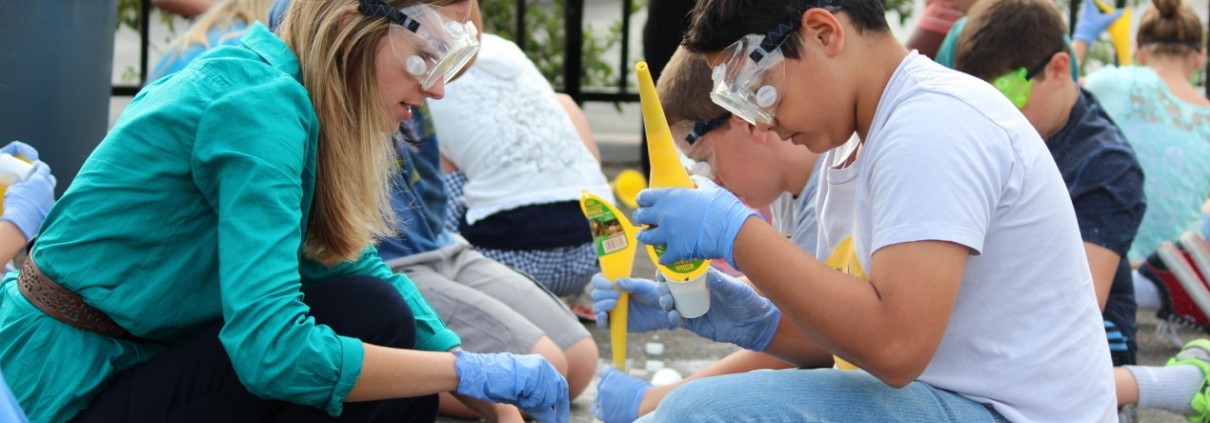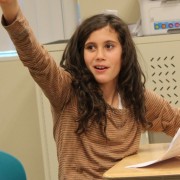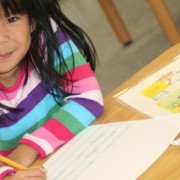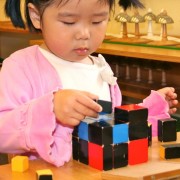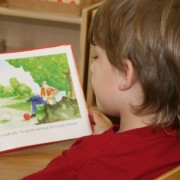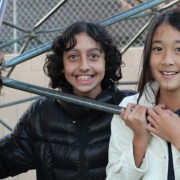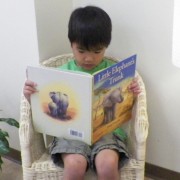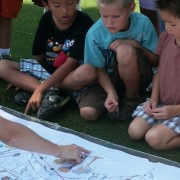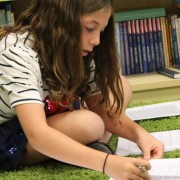Why Do We Study Science
Science education is a staple of modern schooling. One rarely hears anyone question the value or necessity of teaching our children science. But what is the reason behind this view? Why should a child study science?
Despite today’s focus on standardized test and national content standards, it’s clear that the purpose of science education cannot merely be to ensure that children score well on standardized tests of science. (Why have those tests?) The same is true of any answer of the form that science education is necessary to ensure that a child will succeed in high school science, or be ready for college many years down the road. (Why should science be taught at those levels?)
A more plausible answer is that the goal of science education is to allow children to become “scientifically literate”. In practice, this usually means having children memorize an array of scientific facts. Here again, the basic question remains: why is it a value to be scientifically literate?
Other answers include getting students ready for careers in the sciences or engineering, or teaching children the “scientific method” as a means of inculcating critical thinking.

At LePort, we believe a proper science education can achieve all of the above values. But we don’t think any of them captures the core reason for teaching our students science.
The fundamental value of science education, in our view, is to ensure our children are at home in the world.
Science education is the process by which a school helps its students acquire the pleasure and calm confidence that comes from observing and understanding the going-ons about them:
…The joy of recognizing fennel on a hike and being able to mentally relate it to carrots and celery, all members of the Parsley family of flowering plants.
… The pleasure of being able to observe the night sky and point to Venus, recall its movements and perhaps feel connected to the astronomers of the past who used these same observations to discover the heliocentric nature of our solar system.
… The ability to look at the many materials around them, and to wonder how human beings, through ingenuity, invention, and persistence, came to be able make so many useful things from that black substance, petroleum, that used to be a bane of Pennsylvania’s farmers, to the medicines that heal our illnesses.

Being at home in the world this way means having gained a deep, broad body of facts about the physical world, as well as the mental skills to integrate these facts into meaningful concepts, and ultimately into a system of grounded knowledge.
This goal of becoming at home in the world shapes our unique approach to science education at LePort. We believe that everything else that our students achieve–from intellectual independence to abstract knowledge to great test scores–flows from this fundamental goal.
Dr. Bernard Nebel, the author of a series of science education books called “Building Foundations of Scientific Understanding“, shares this view of the purpose of science education. In his work, Dr. Nebel illustrates this integration of facts and applied, conceptual understanding with a sports analogy:
Take understanding a sport such as baseball, for example. There are many “facts” involved: bases, pitcher’s mound, batter’s box, strikes, balls, throwing, hitting, catching, running, outs, runs, innings, etc. But it would be absurd to say that we had any understanding of baseball if we only knew the facts. It would be equally absurd to think we could grasp the concept of playing baseball without knowing the facts. It all makes sense, and we gain an understanding of baseball as we fit the facts together into the context of how the game is played. Then, the facts and the concept become mutually supporting. There is synergy between the two. Imagine trying to memorize all the facts of baseball apart from the context of the game or trying to understand the concept of the game without the facts. It is in the context of the game that the facts are organized, remembered, and provide an understanding.
We at LePort have only recently learned of Dr. Nebel’s work, and are excited to find that we already adopt the basic approach he articulates.

When we teach materials science, for instance, we don’t merely mention materials (wood, plastic, metal) in passing, and then quickly move on to talk about chemical elements, atoms and bonding and other abstract scientific terms.
Instead, in our approach, we immerse our students in the real, observational facts, and carefully guide them, step-by-step, as they draw their own conclusions and discover what explains those facts. We may call students’ attention to the things around them, and ask them to categorize them by the materials they are made of (metal, plastic, wood, glass, clay/stone etc.) We may then ask them, “how do you know that this is made of metal?” and lead them to observe and describe the different characteristics of materials (their look, feel, relative weight, hardness and so on.)
In the process, we help them develop a concise vocabulary describing a material’s characteristic (a texture may be smooth, grainy, rough or fibrous; materials have different degrees of flexibility, from brittle glass or ceramics, to bendable rubber and metal), and to become careful observers.
The result is that our students learn to see with their own eyes, and to describe clearly and precisely what they see, key attributes of scientists which all too often go by the wayside in today’s testing-focused classrooms. Here’s how an MIT professor describes the issue in the book The Global Achievement Gap, by Tony Wagner:
I worry about the future of science in this country. … For kids to get passionate about science, they have to get their hands dirty–literally. They have to have labs where they study things in depth and learn to observe, instead of just memorizing facts from a textbook. The kids who take my intro lab courses [at MIT] today have gotten top scores on all of the Advanced Placement science courses in their high schools, but they don’t know how to observe. I ask them to describe what they see in the microscopes, and they want to know what they should be looking for–what the right answer is.

LePort students consistently start with careful observations, which tie what they learn to the world around them. And then, critically, these observations give rise to questions that intrigue and motivate further inquiry: why do we make knives out of metal, and not out of glass? Where does metal come from? Have people always used metal? If not, how did they discover it?
Gradually, over years of study, children come to grasp the concepts that explain their observations, and, because what they learn answers real questions they care about, they remember what they learn. In this way, our approach to science is an expression of our broader approach to education: making sure that we’re teaching Knowledge for Life: knowledge that stays with each child, and that helps him make sense of the world he lives in.
We invite you to be an active part of your child’s journey as he becomes at home in the world. For us, as educators and parents, it is one of the greatest pleasures to help our own children and our students discover the wondrous world about them, and gain the pride that comes from knowing their minds can understand it.
Dr. Nebel’s series of books are wonderful guides we recommend to any parent who wants to take a more active role in her child’s science education. They are the only commercially available science program we know of that is largely consistent with how we teach at LePort. They provide a wonderful treasure of information on how to integrate a scientific look at the world into everyday experiences, from preschool through the upper grades. In fact, by reading these books, you yourself might come away with a better understanding of science, a newfound joy in discovery, and a feeling of being more at home in the world.
Doug Peltz & Heike Larson

